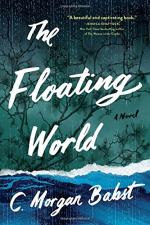|
This section contains 1,777 words (approx. 5 pages at 400 words per page) |

|
Magda had told her that ukiyo-e meant pictures of the floating world, and she finally understood what that meant: that even a mountain was ephemeral, something that existed as we perceived it and so disappeared when we turned away.
-- Del
(October 25)
Importance: The author here refers to a genre of Japanese art — more specifically, Hokusai’s Thirty-Six Views of Mount Fuji, a famous set of woodblock prints. It is the English translation of this Japanese term that gives the novel its name. Del’s interpretation of the term speaks to the ephemeral nature of not just any landscape, but of New Orleans; she pulls the prints from the basement archives of the office where she works the day before she leaves New York, as if to prepare herself for the “disappearance” of the New Orleans that she once knew.
But fleeing wasn’t cool. No true New Orleeanian—Her grandfather would curl his...
-- Cora
(August 28)
|
This section contains 1,777 words (approx. 5 pages at 400 words per page) |

|



